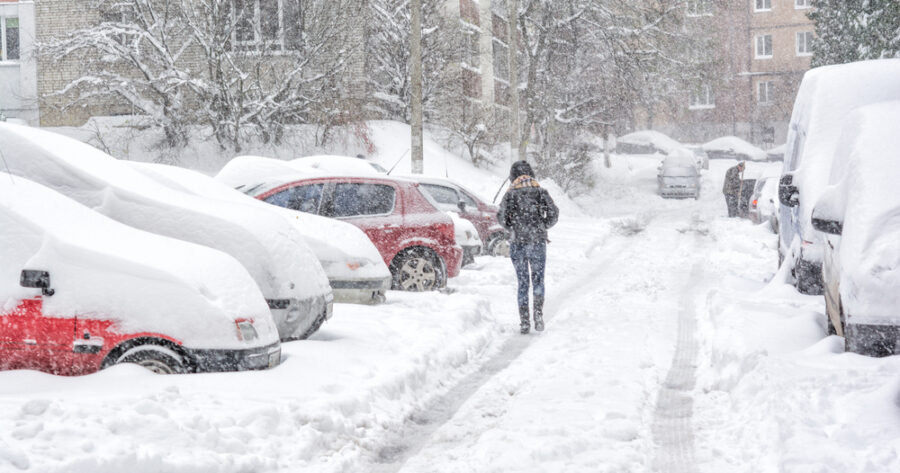Caring for your vehicle in cold weather is crucial for keeping it safe and efficient. Winter conditions can impact your vehicle’s performance, from the battery to the tires. By taking a few simple steps, you can prevent winter troubles and keep your car running smoothly. Follow these tips to prepare your vehicle for winter and avoid unexpected issues during the colder months.
1. Check and Replace Your Battery
Cold weather puts extra strain on car batteries, reducing their ability to hold a charge. In freezing temperatures, batteries may struggle to start the engine, which is why a battery check is essential. If your battery is more than three years old, consider replacing it before winter arrives. Many auto shops can test your battery without charge, helping you determine if a replacement is needed.
To give your battery the best chance, keep the terminals clean from corrosion and ensure they’re tightly connected. You may also want to invest in a battery warmer, which keeps the battery from getting too cold and helps it work more efficiently in freezing temperatures.
2. Use the Right Oil for Cold Weather
Oil is the lifeblood of your engine, and its performance can vary based on temperature. In colder weather, thicker oils can become sluggish, making it harder for the engine to start. Check your vehicle’s owner manual for the recommended oil grade for winter. Many cars perform best with lower-viscosity oils in cold temperatures, as these flow more easily and reduce strain on the engine.
If you’re unsure about what type of oil to use, consult a trusted mechanic. Regular oil changes before winter can also help your engine run smoothly and prevent cold-related problems. Synthetic oils, designed to withstand extreme temperatures, might be an ideal choice in harsh winter climates.
3. Keep Your Tires in Top Shape
Proper tire care is crucial during the winter months. Cold weather can cause tire pressure to drop, leading to underinflated tires. Low tire pressure can reduce traction on icy or snowy roads, increasing the risk of slipping. Check your tire pressure regularly and ensure it’s at the level recommended by the manufacturer.
Consider switching to winter tires if you live in a region with heavy snowfall or icy roads. Winter tires offer better traction in cold conditions, improving your vehicle’s handling and safety. While they may be an investment, winter tires can make a significant difference in your car’s performance in snow and ice.
4. Monitor Your Antifreeze Levels
Antifreeze, or coolant, plays a vital role in protecting your engine from freezing. During the winter months, it’s essential to ensure that your coolant levels are adequate. The ideal mixture for antifreeze is a 50/50 blend of coolant and water, providing the best protection against freezing temperatures.
Check the coolant levels in your car’s reservoir and top it off if needed. Low coolant levels can lead to freezing and engine damage, so don’t overlook this step. Many auto parts stores carry inexpensive coolant testers, which allow you to measure your antifreeze level and its effectiveness in cold weather.
5. Keep Your Windshield Clear and Functional
Winter brings not only cold weather but also frost, ice, and snow, which can impair visibility. A clear windshield is essential for safe driving, so take steps to maintain it. Start by switching to winter windshield wiper fluid, which is designed to resist freezing. Regular wiper fluid may freeze in the reservoir or on the windshield, making it difficult to see in winter conditions.
Check your windshield wipers for wear, and consider replacing them if they’re not clearing well. In winter, you’ll need reliable wipers to handle snow and slush. Ice scrapers and de-icing sprays can also help remove frost and ice from your windshield quickly, reducing your morning prep time.
6. Keep Emergency Supplies in Your Vehicle
Winter driving conditions can be unpredictable, making it essential to have emergency supplies on hand. Pack a winter emergency kit that includes items like a blanket, flashlight, gloves, water, and non-perishable snacks. Include a small shovel, jumper cables, and an ice scraper for added safety and convenience.
A bag of sand or cat litter is also useful for providing traction if your tires get stuck in the snow. These supplies can be invaluable if you’re caught in a snowstorm or if your vehicle breaks down in freezing temperatures. It’s always better to be prepared for unexpected situations, especially in harsh winter weather.
7. Protect Your Car’s Exterior
Cold weather, snow, and road salt can damage your car’s exterior. Salt, used to melt ice on roads, can lead to rust and corrosion if left unchecked. Before winter sets in, consider applying a protective wax coat to your car’s paint. This helps create a barrier against the elements and keeps your car looking new.
Washing your vehicle regularly during winter is also essential, especially the undercarriage, where salt and grime accumulate. Many car washes offer an undercarriage wash option, which can help remove salt and protect against rust.
Your Car Will Appreciate These Winter Care Tips!
Learning how to care for your vehicle in cold weather is essential to keep it running smoothly and safely. By checking the battery, oil, tires, antifreeze, and windshield, you’ll be prepared for winter’s challenges.
Keeping an emergency kit and protecting your car’s exterior also add extra peace of mind during cold months. With a few proactive steps, you can enjoy a worry-free winter driving experience and keep your vehicle in excellent condition all season long.
